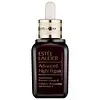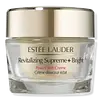What's inside
What's inside
 Key Ingredients
Key Ingredients

 Benefits
Benefits

 Concerns
Concerns

 Ingredients Side-by-side
Ingredients Side-by-side

Water
Skin ConditioningBifida Ferment Lysate
Skin ConditioningMethyl Gluceth-20
HumectantPEG-75
HumectantBis-PEG-18 Methyl Ether Dimethyl Silane
EmollientButylene Glycol
HumectantPropanediol
SolventCola Acuminata Seed Extract
Skin ConditioningHydrolyzed Algin
Pantethine
EmollientCaffeine
Skin ConditioningLecithin
EmollientTripeptide-32
Skin ConditioningEthylhexylglycerin
Skin ConditioningSodium Rna
Skin ConditioningBisabolol
MaskingGlycereth-26
HumectantSqualane
EmollientSodium Hyaluronate
HumectantOleth-3 Phosphate
Caprylyl Glycol
EmollientLactobacillus Ferment
Skin ConditioningOleth-3
EmulsifyingOleth-5
EmulsifyingAnthemis Nobilis Flower Extract
MaskingYeast Extract
Skin ConditioningCholeth-24
EmulsifyingHydrogenated Lecithin
EmulsifyingCeteth-24
CleansingTocopheryl Acetate
AntioxidantEthylhexyl Methoxycinnamate
UV AbsorberHexylene Glycol
EmulsifyingCarbomer
Emulsion StabilisingTriethanolamine
BufferingTrisodium EDTA
BHT
AntioxidantXanthan Gum
EmulsifyingPhenoxyethanol
PreservativeCI 14700
Cosmetic ColorantCI 19140
Cosmetic ColorantWater, Bifida Ferment Lysate, Methyl Gluceth-20, PEG-75, Bis-PEG-18 Methyl Ether Dimethyl Silane, Butylene Glycol, Propanediol, Cola Acuminata Seed Extract, Hydrolyzed Algin, Pantethine, Caffeine, Lecithin, Tripeptide-32, Ethylhexylglycerin, Sodium Rna, Bisabolol, Glycereth-26, Squalane, Sodium Hyaluronate, Oleth-3 Phosphate, Caprylyl Glycol, Lactobacillus Ferment, Oleth-3, Oleth-5, Anthemis Nobilis Flower Extract, Yeast Extract, Choleth-24, Hydrogenated Lecithin, Ceteth-24, Tocopheryl Acetate, Ethylhexyl Methoxycinnamate, Hexylene Glycol, Carbomer, Triethanolamine, Trisodium EDTA, BHT, Xanthan Gum, Phenoxyethanol, CI 14700, CI 19140
Water
Skin ConditioningIsononyl Isononanoate
EmollientGlycerin
HumectantC12-20 Acid PEG-8 Ester
EmulsifyingAscorbyl Glucoside
AntioxidantDimethicone
EmollientButyrospermum Parkii Butter
Skin ConditioningButylene Glycol
HumectantCetyl Alcohol
EmollientMoringa Oleifera Seed Extract
Skin ConditioningCallicarpa Japonica Fruit Extract
Skin ConditioningSodium Hyaluronate
HumectantAcetyl Hexapeptide-8
HumectantLaminaria Digitata Extract
Skin ProtectingLactis Proteinum
Skin ConditioningTuna Extract
Skin ConditioningAcetyl Glucosamine
Skin ConditioningSaccharum Officinarum Extract
MoisturisingTocopheryl Acetate
AntioxidantNarcissus Tazetta Bulb Extract
AstringentPyrus Malus Fruit Extract
Skin ConditioningCucumis Sativus Fruit Extract
EmollientLens Esculenta Fruit Extract
Skin ConditioningCitrullus Lanatus Fruit Extract
Skin ConditioningLaminaria Saccharina Extract
Skin ProtectingHelianthus Annuus Seed Extract
Skin ConditioningSigesbeckia Orientalis Extract
Skin ConditioningCaffeine
Skin ConditioningHordeum Vulgare Extract
EmollientSodium Lactate
BufferingPorphyridium Cruentum Extract
Skin ConditioningSodium Polyaspartate
HumectantSorbitol
HumectantEthylhexylglycerin
Skin ConditioningPropylene Glycol Dicaprate
EmollientCaprylyl Glycol
EmollientCetearyl Glucoside
EmulsifyingSodium PCA
HumectantCetearyl Alcohol
EmollientHydroxyethyl Urea
HumectantSucrose
HumectantTocopherol
AntioxidantCitric Acid
BufferingXanthan Gum
EmulsifyingPEG-100 Stearate
Polyacrylate Crosspolymer-6
Emulsion StabilisingPentylene Glycol
Skin ConditioningIsoceteth-20
EmulsifyingPotassium Cetyl Phosphate
EmulsifyingSodium Hydroxide
BufferingT-Butyl Alcohol
PerfumingAmmonium Acryloyldimethyltaurate/Vp Copolymer
Parfum
MaskingBHT
AntioxidantDisodium EDTA
Sodium Citrate
BufferingSodium Benzoate
MaskingPotassium Sorbate
PreservativeSodium Dehydroacetate
PreservativePhenoxyethanol
PreservativeWater, Isononyl Isononanoate, Glycerin, C12-20 Acid PEG-8 Ester, Ascorbyl Glucoside, Dimethicone, Butyrospermum Parkii Butter, Butylene Glycol, Cetyl Alcohol, Moringa Oleifera Seed Extract, Callicarpa Japonica Fruit Extract, Sodium Hyaluronate, Acetyl Hexapeptide-8, Laminaria Digitata Extract, Lactis Proteinum, Tuna Extract, Acetyl Glucosamine, Saccharum Officinarum Extract, Tocopheryl Acetate, Narcissus Tazetta Bulb Extract, Pyrus Malus Fruit Extract, Cucumis Sativus Fruit Extract, Lens Esculenta Fruit Extract, Citrullus Lanatus Fruit Extract, Laminaria Saccharina Extract, Helianthus Annuus Seed Extract, Sigesbeckia Orientalis Extract, Caffeine, Hordeum Vulgare Extract, Sodium Lactate, Porphyridium Cruentum Extract, Sodium Polyaspartate, Sorbitol, Ethylhexylglycerin, Propylene Glycol Dicaprate, Caprylyl Glycol, Cetearyl Glucoside, Sodium PCA, Cetearyl Alcohol, Hydroxyethyl Urea, Sucrose, Tocopherol, Citric Acid, Xanthan Gum, PEG-100 Stearate, Polyacrylate Crosspolymer-6, Pentylene Glycol, Isoceteth-20, Potassium Cetyl Phosphate, Sodium Hydroxide, T-Butyl Alcohol, Ammonium Acryloyldimethyltaurate/Vp Copolymer, Parfum, BHT, Disodium EDTA, Sodium Citrate, Sodium Benzoate, Potassium Sorbate, Sodium Dehydroacetate, Phenoxyethanol
 Reviews
Reviews

Ingredients Explained
These ingredients are found in both products.
Ingredients higher up in an ingredient list are typically present in a larger amount.
BHT is a synthetic antioxidant and preservative.
As an antioxidant, it helps your body fight off free-radicals. Free-radicals are molecules that may damage your skin cells.
As a preservative, it is used to stabilize products and prevent them from degrading. Specifically, BHT prevents degradation from oxidation.
The concerns related to BHT come from oral studies; this ingredient is currently allowed for use by both the FDA and EU.
However, it was recently restricted for use in the UK as of April 2024.
Learn more about BHTButylene Glycol (or BG) is used within cosmetic products for a few different reasons:
Overall, Butylene Glycol is a safe and well-rounded ingredient that works well with other ingredients.
Though this ingredient works well with most skin types, some people with sensitive skin may experience a reaction such as allergic rashes, closed comedones, or itchiness.
Learn more about Butylene GlycolCaffeine is most associated with coffee, tea, and cacao. In skincare, it helps with calming inflammation and is rich in antioxidants.
While caffeine is used to treat cellulite and and dark circles, further studies are needed to prove this. It has been believed to help with these skin conditions due to its ability to dilate blood vessels and increase blood flow.
Some studies are looking into caffeine's ability to protect against UV rays.
Learn more about CaffeineCaprylyl Glycol is a humectant and emollient, meaning it attracts and preserves moisture.
It is a common ingredient in many products, especially those designed to hydrate skin. The primary benefits are retaining moisture, skin softening, and promoting a healthy skin barrier.
Though Caprylyl Glycol is an alcohol derived from fatty acids, it is not the kind that can dry out skin.
This ingredient is also used as a preservative to extend the life of products. It has slight antimicrobial properties.
Learn more about Caprylyl GlycolEthylhexylglycerin (we can't pronounce this either) is commonly used as a preservative and skin softener. It is derived from glyceryl.
You might see Ethylhexylglycerin often paired with other preservatives such as phenoxyethanol. Ethylhexylglycerin has been found to increase the effectiveness of these other preservatives.
Phenoxyethanol is a preservative that has germicide, antimicrobial, and aromatic properties. Studies show that phenoxyethanol can prevent microbial growth. By itself, it has a scent that is similar to that of a rose.
It's often used in formulations along with Caprylyl Glycol to preserve the shelf life of products.
Sodium Hyaluronate is hyaluronic acid's salt form. It is commonly derived from the sodium salt of hyaluronic acid.
Like hyaluronic acid, it is great at holding water and acts as a humectant. This makes it a great skin hydrating ingredient.
Sodium Hyaluronate is naturally occurring in our bodies and is mostly found in eye fluid and joints.
These are some other common types of Hyaluronic Acid:
Learn more about Sodium HyaluronateTocopheryl Acetate is AKA Vitamin E. It is an antioxidant and protects your skin from free radicals. Free radicals damage the skin by breaking down collagen.
One study found using Tocopheryl Acetate with Vitamin C decreased the number of sunburned cells.
Tocopheryl Acetate is commonly found in both skincare and dietary supplements.
Learn more about Tocopheryl AcetateWater. It's the most common cosmetic ingredient of all. You'll usually see it at the top of ingredient lists, meaning that it makes up the largest part of the product.
So why is it so popular? Water most often acts as a solvent - this means that it helps dissolve other ingredients into the formulation.
You'll also recognize water as that liquid we all need to stay alive. If you see this, drink a glass of water. Stay hydrated!
Learn more about WaterXanthan gum is used as a stabilizer and thickener within cosmetic products. It helps give products a sticky, thick feeling - preventing them from being too runny.
On the technical side of things, xanthan gum is a polysaccharide - a combination consisting of multiple sugar molecules bonded together.
Xanthan gum is a pretty common and great ingredient. It is a natural, non-toxic, non-irritating ingredient that is also commonly used in food products.
Learn more about Xanthan Gum